Table of Contents
QUICK SUMMARY:
Color psychology plays a critical role in how people perceive brands, marketing messages, and digital experiences. This guide explores how different colors influence emotions and behavior, how marketers strategically utilize color, and what each color signifies in a branding context. Packed with real-world examples and visual references, it’s designed to help agencies and marketers choose the right palette—intentionally.
Open a website, scroll through social media, or walk past a product display—color is the first thing that catches your eye. Before you’ve read a single word, your brain has already started making decisions. Certain colors feel trustworthy. Others feel bold. Some feel expensive. That split-second reaction isn’t random; it’s psychological.
Color shapes how people interpret information, respond to marketing, and connect with brands. It influences what we notice, how we feel, and even what we buy. Across industries, color is a subtle yet powerful tool that helps brands express their personality and connect with the right audience—often without a single word.
In marketing, where attention is limited and first impressions matter, these subtle signals add up fast. A carefully chosen color palette can build brand recognition, guide behavior, and support your overall marketing strategy. It can also backfire if it sends mixed messages or clashes with the emotions you're trying to evoke.
In the sections ahead, we’ll unpack how color psychology works, explore the emotional and cultural associations behind common colors, and share examples of how brands use color intentionally. Whether you’re designing a logo, selecting marketing materials, or refining a brand’s identity, understanding color is a crucial factor that helps you persuade consumers and communicate with greater clarity.
What is color psychology?
Color psychology is the study of how different hues influence human behavior, emotions, and decision-making. It examines the ways colors influence what people notice, how they feel, and the actions they take—often without conscious awareness.
This isn't just theory. Brands, advertisers, and designers have long utilized color as a strategic tool to influence consumer behavior. Whether the goal is to evoke feelings of trust, create urgency, or highlight a particular product feature, color choices are rarely accidental.
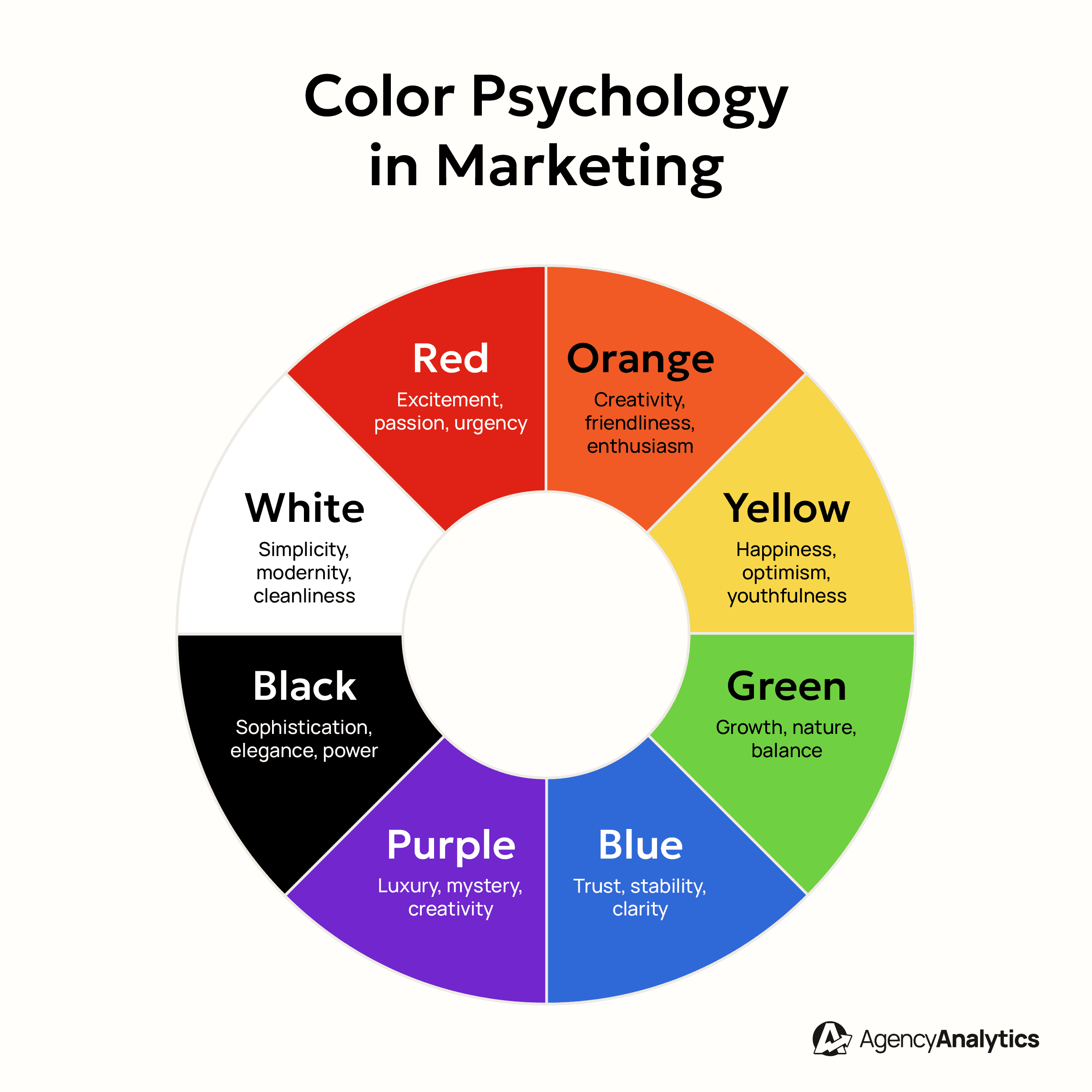
Of course, not every response to color is universal. Some meanings originate from biology (such as how red draws attention because it signals danger or excitement), while cultural context, personal experiences, and trends shape others. A color that feels calming in one part of the world might carry a completely different association elsewhere.
Still, specific patterns do emerge. Across industries and audiences, marketers have observed that warm colors tend to evoke an energetic and bold feeling, while cool colors often convey a sense of calmness or professionalism. Understanding these general associations provides marketers with a starting point—one that is backed by both psychological principles and real-world results.
For agencies working across industries and brands, color psychology offers a practical framework. It helps explain why specific palettes resonate with particular audiences, why some colors differentiate a brand in a crowded space, and how subtle shifts in tone can change how consumers perceive a message.
How marketers use color psychology
Color is one of the most effective ways to communicate a brand's personality. That first impression happens in a fraction of a second—and it shapes how consumers interact with the brand moving forward.
For marketers, color becomes a strategic asset. It helps convey feelings that are otherwise hard to put into words. The goal is to align visual choices with how a brand wants to be perceived. A fitness brand targeting high-energy consumers might lean on energetic colors like red or orange, while a wellness brand may favor calming greens and soft neutrals to reflect its focus on balance and health.
Color also supports specific marketing strategies:
Improving brand recognition: Studies show that consistent branding can boost recognition by up to 80% and increase revenue by 10% to 20%. A consistent color palette becomes an integral part of a brand’s identity across all channels.
Highlighting hierarchy: In digital design, color guides the eye. It draws attention to key actions—like sign-up buttons, pricing plans, or calls to action—by creating high contrast or signaling urgency.
Evoking emotional response: Colors influence how people feel about what they’re seeing. Whether the goal is to convey positive emotions or steer clear of negative connotations, color becomes a tool for emotional framing.
Matching audience preferences: Colors can help align with the tastes and expectations of a target audience. What feels fresh and modern to one demographic might feel off-brand or unfamiliar to another.
At its best, color psychology supports deeper consistency. It ensures that marketing materials, websites, packaging, and campaigns all speak the same visual language—one that helps a brand stand out and feel intentional at every touchpoint.
Color families: Warm colors vs. cool colors
Every color sits somewhere on the color spectrum, but in marketing, it’s often more helpful to group them by temperature. These broad categories serve as a useful first step when selecting a color palette that aligns with a brand’s tone, audience, and marketing objectives.
Warm colors: bold, energetic, attention-grabbing

Warm colors, such as red, orange, and yellow, are naturally stimulating. They tend to feel active, emotional, and expressive. In marketing, they’re often used to create urgency, spark curiosity, or inject energy into a campaign. When used strategically, warm tones can help a brand feel more approachable, fun, or adventurous.
Cool colors: calm, stable, and professional
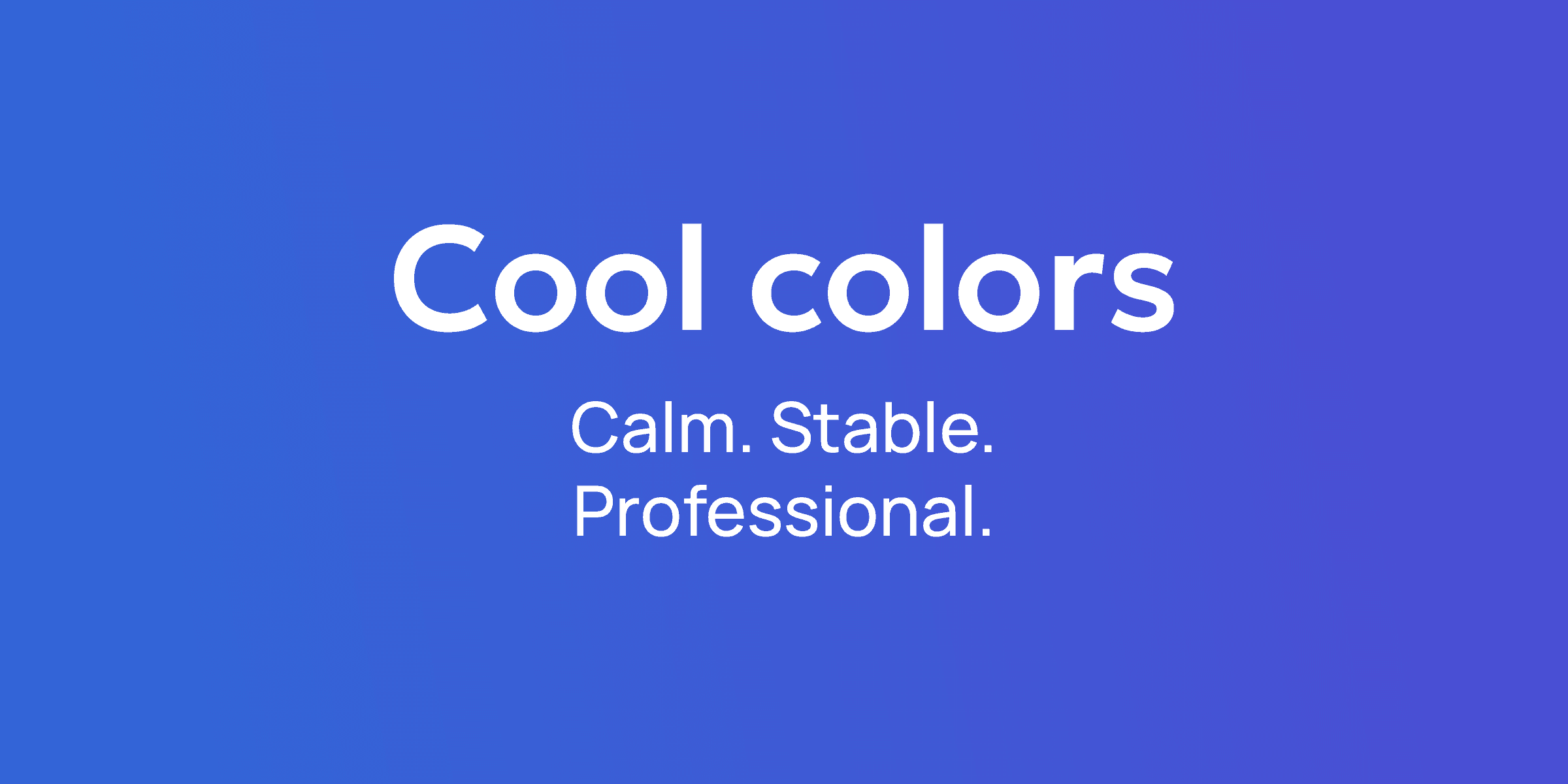
Cool colors like blue, green, and purple are more subdued and often associated with clarity, trust, and professionalism. They’re a popular choice for industries that value precision, stability, or wellness. These colors tend to sit comfortably in the background, supporting brand messaging without overpowering it.
While most brands use a mix of warm and cool colors, understanding the dominant temperature of a palette helps marketers create a consistent emotional tone. It also makes it easier to ensure that colors work together—whether you’re designing a logo, refining marketing materials, or adjusting a website’s user interface.
Color meanings in marketing and brand recognition
Certain colors show up again and again in branding—and it’s not by accident. Over time, specific colors have developed strong psychological associations that shape how consumers respond to marketing. Whether the goal is to inspire trust, suggest luxury, or draw attention in a crowded feed, color can play a significant role in how a brand is perceived.
Below, you’ll find a breakdown of how marketing colors typically influence perception, including a visual cue for each. These aren’t strict rules—but they offer a helpful starting point when choosing the right palette for a particular brand.
Red

Red is high energy. It increases blood pressure, sparks action, and draws immediate focus. Brands often use it to signal power, speed, or excitement—think Coca-Cola, Target, or YouTube. It’s also tied to strong consumer reactions, making it effective for CTAs or flash promotions. But red can also trigger negative emotions like aggression or stress if overused.
Used well: Calls to action, retail promotions, time-sensitive campaigns Famous examples: Coca-Cola, Target, Netflix, YouTube Avoid for: Luxury, wellness, or minimalist brands (may feel harsh or aggressive)
Orange
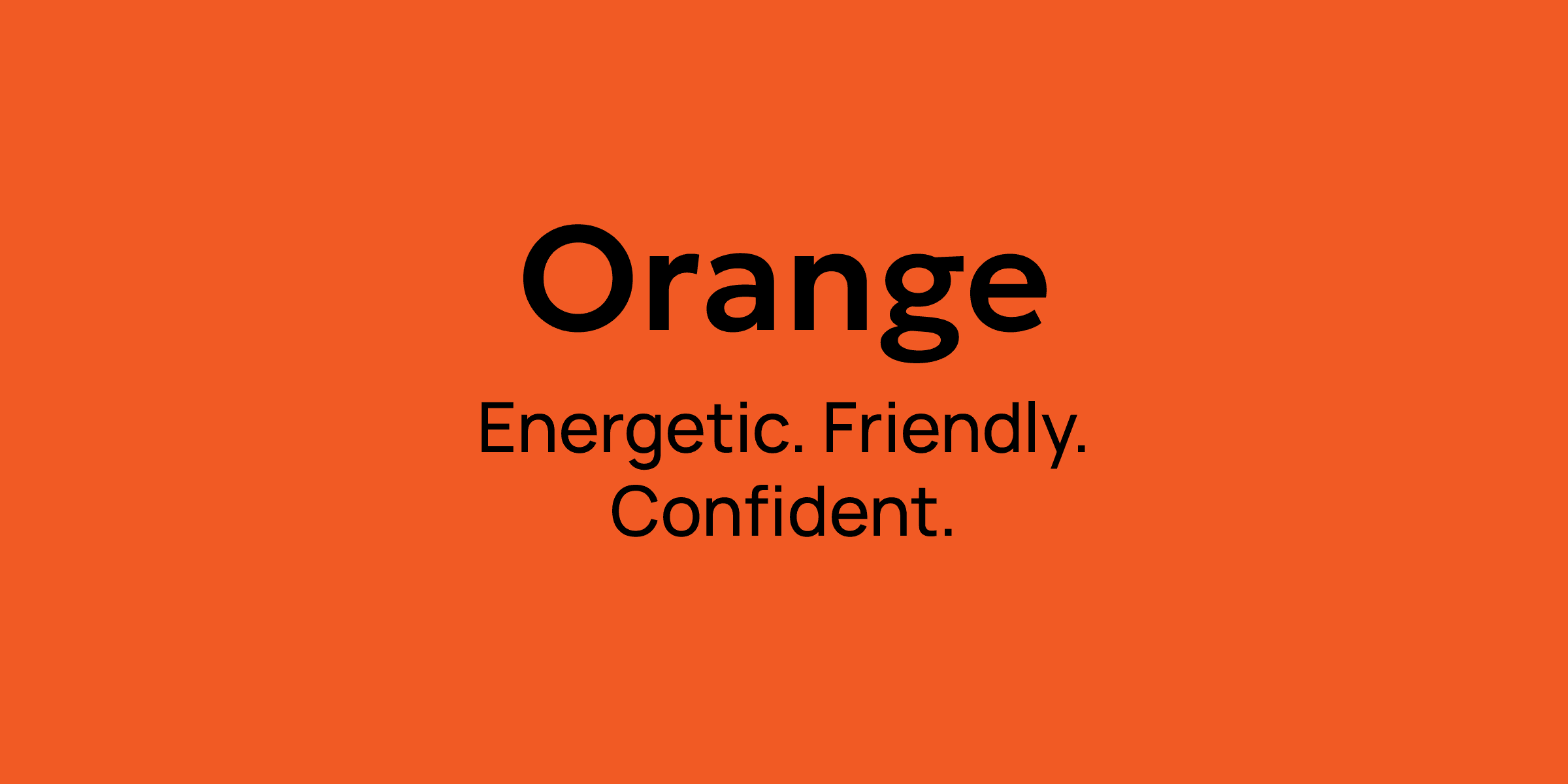
Orange blends the urgency of red with the optimistic color tones of yellow. It’s often used to create a sense of energy, playfulness, or innovation. For brands seeking a fresh and modern look, orange adds a touch of personality without being overwhelming. Used well: Startups, youth brands, lifestyle content Famous examples: Amazon, Orange Theory Fitness, Fanta, HubSpot Avoid for: Premium or exclusive branding (can feel too casual)
Yellow

Yellow evokes warmth, joy, and brightness. It’s highly visible and associated with positivity—but like red, too much can create visual fatigue. When used in moderation, it helps draw attention and can highlight a cheerful or informal tone.
Used well: Attention-grabbing elements, kids’ products, playful packaging Famous examples: McDonald’s, Post-it, Snapchat Avoid for: Overuse in text or on bright backgrounds (can strain the eyes)
Green

reen is tied to the natural world, health, and growth. It’s often used by brands that want to promote sustainability, wellness, or financial confidence. Green can also evoke a sense of groundedness and stability, making it a wise choice for high-quality products that aim to foster long-term trust.
Used well: Wellness brands, eco-products, finance Famous examples: Whole Foods, Spotify, Animal Planet Avoid for: High-tech or luxury products without a nature-related angle
Blue
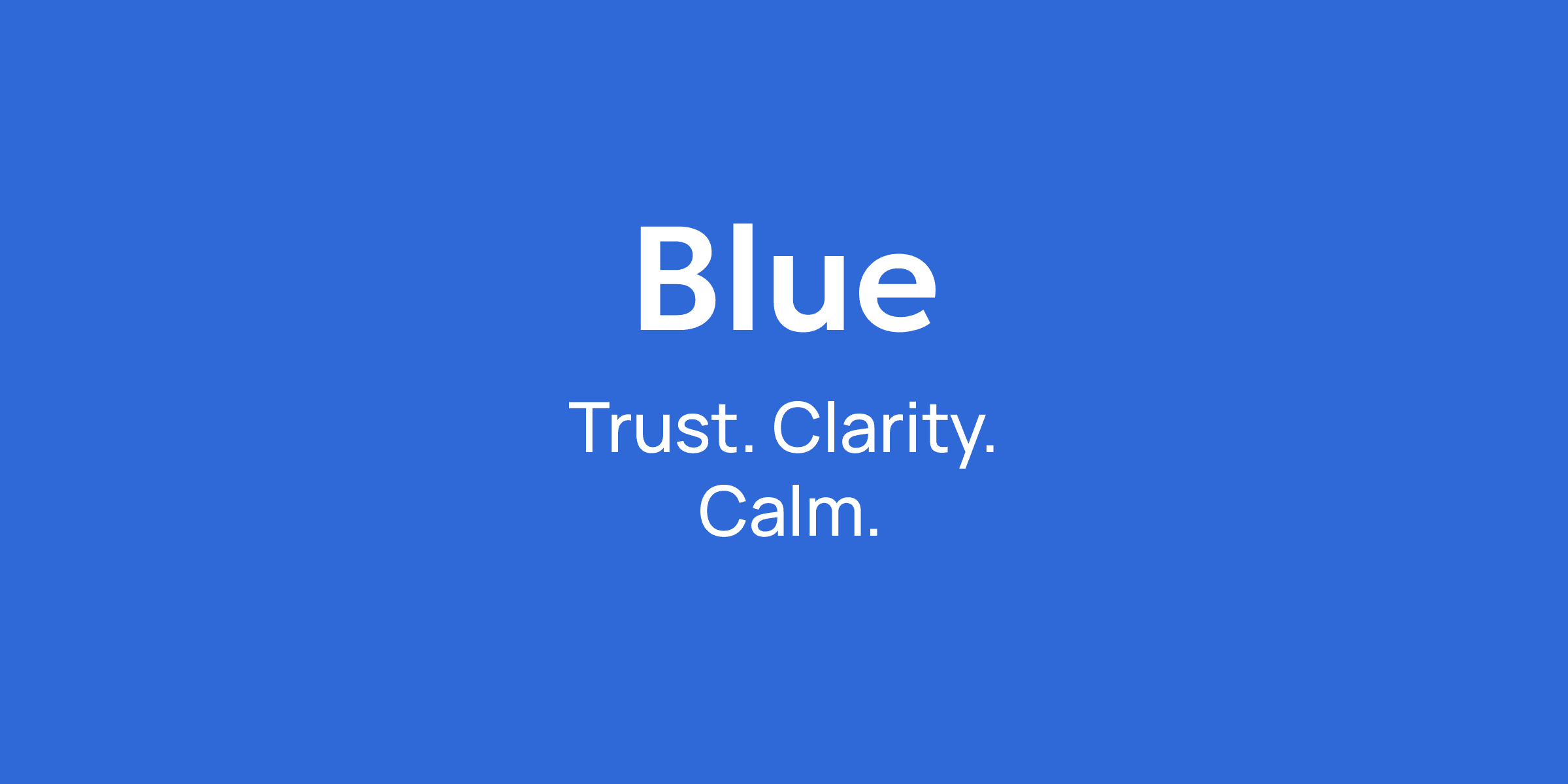
The color blue is widely used for good reason. It’s considered the most universally liked color across many brands and cultures. Often associated with intelligence and stability, it’s a go-to choice for industries that rely on credibility, such as finance, healthcare, and technology.
Used well: SaaS, healthcare, financial services, corporate branding Famous examples: T-Mobile, IBM, PayPal, Facebook Avoid for: Youthful or rebellious brands (may feel too traditional)
Purple
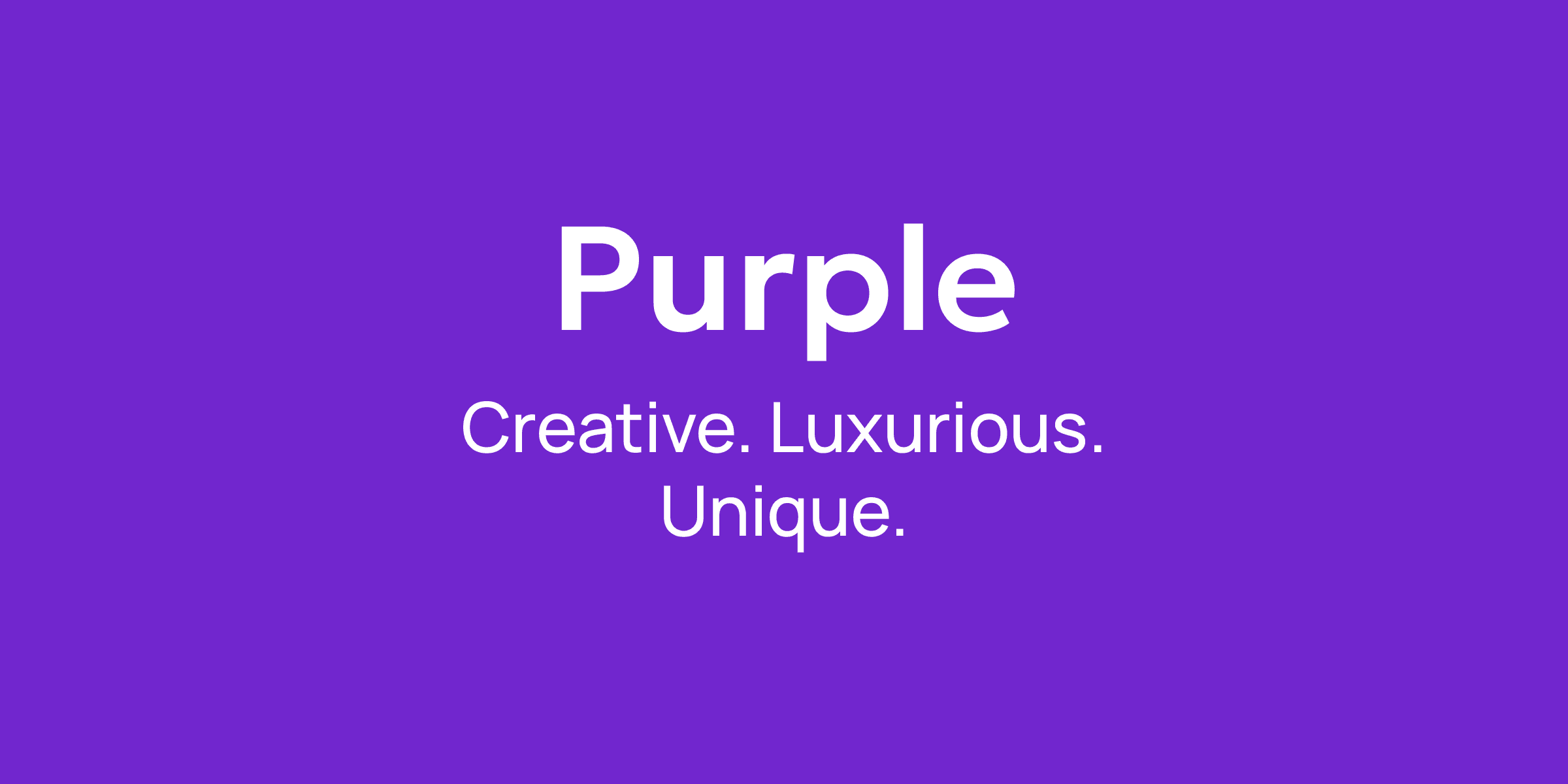
Purple has long been regarded as a royal color, historically associated with wealth and status. In marketing, it’s used to signal creativity, mystery, or sophistication. Brands that want to differentiate or feel slightly outside the mainstream often turn to purple.
Used well: Beauty, wellness, creative industries Famous examples: Victoria’s Secret, Cadbury, Hallmark Avoid for: Budget or mass-market products (can feel overly exclusive)
Pink

Pink is often used to convey warmth, softness, or romance. While traditionally marketed toward feminine audiences, modern brands use pink more broadly to suggest approachability and emotional depth.
Used well: Nonprofits, lifestyle brands, Gen Z-oriented products Famous examples: Barbie, Glossier, Baskin-Robbins Avoid for: Corporate or traditionally masculine industries (unless used intentionally)
Black

Black signals luxury, professionalism, and control. It’s frequently used by premium brands and in marketing materials where simplicity and contrast are key.
Used well: High-end fashion, luxury products, editorial design Famous examples: Chanel, Nike, Apple (in some campaigns) Avoid for: Wellness or nature brands (can feel too stark or heavy)
White
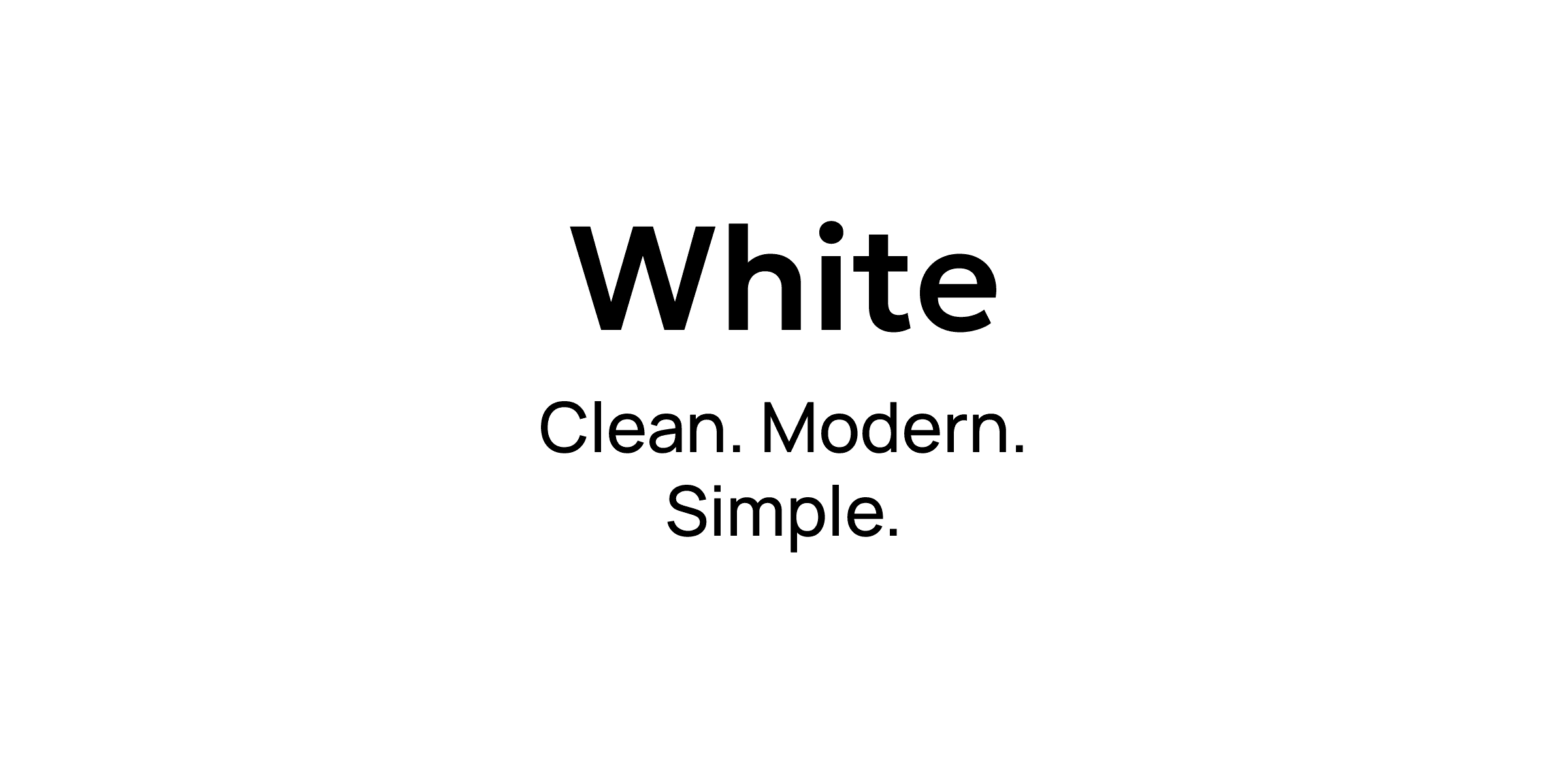
White is associated with clarity, space, and neutrality. In digital environments, it’s often used to create breathing room or improve readability. It helps other colors pop and enhances trust through a clean, uncluttered feel.
Used well: Backgrounds, minimalist design, healthcare Famous examples: Apple, The New York Times, Adidas Avoid for: Low-contrast designs or palettes lacking accent colors
Brown
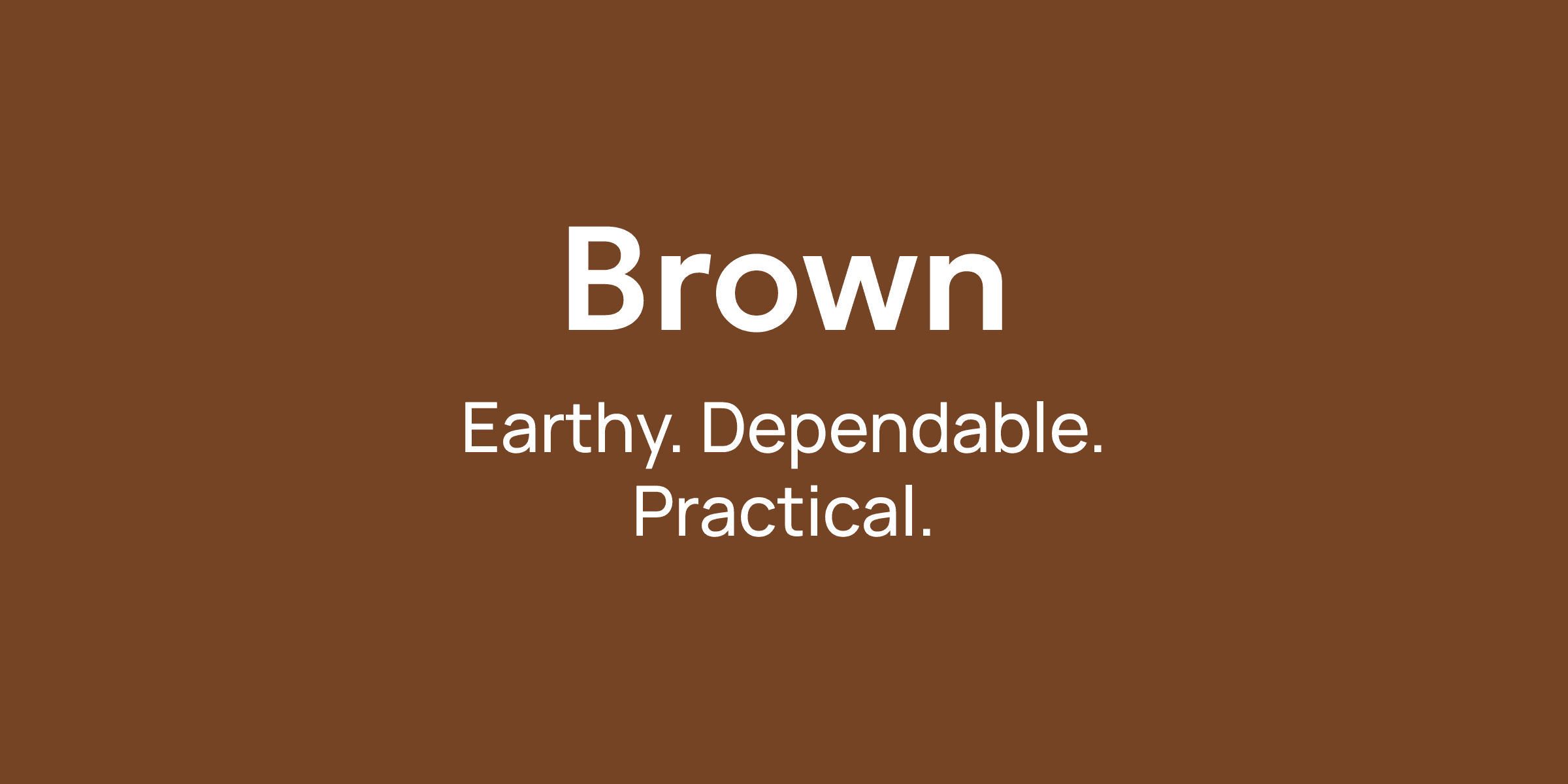
Brown evokes warmth and reliability. It’s common in food, craft, and outdoor brands—where an organic or rugged feel is part of the story. While not as widely used in tech or digital branding, it works well when aligned with brand values or product origin.
Used well: Coffee, packaging, artisanal brands Famous examples: UPS, M&M’s, Hershey’s Avoid for: Digital-first brands or high-tech experiences
Gray
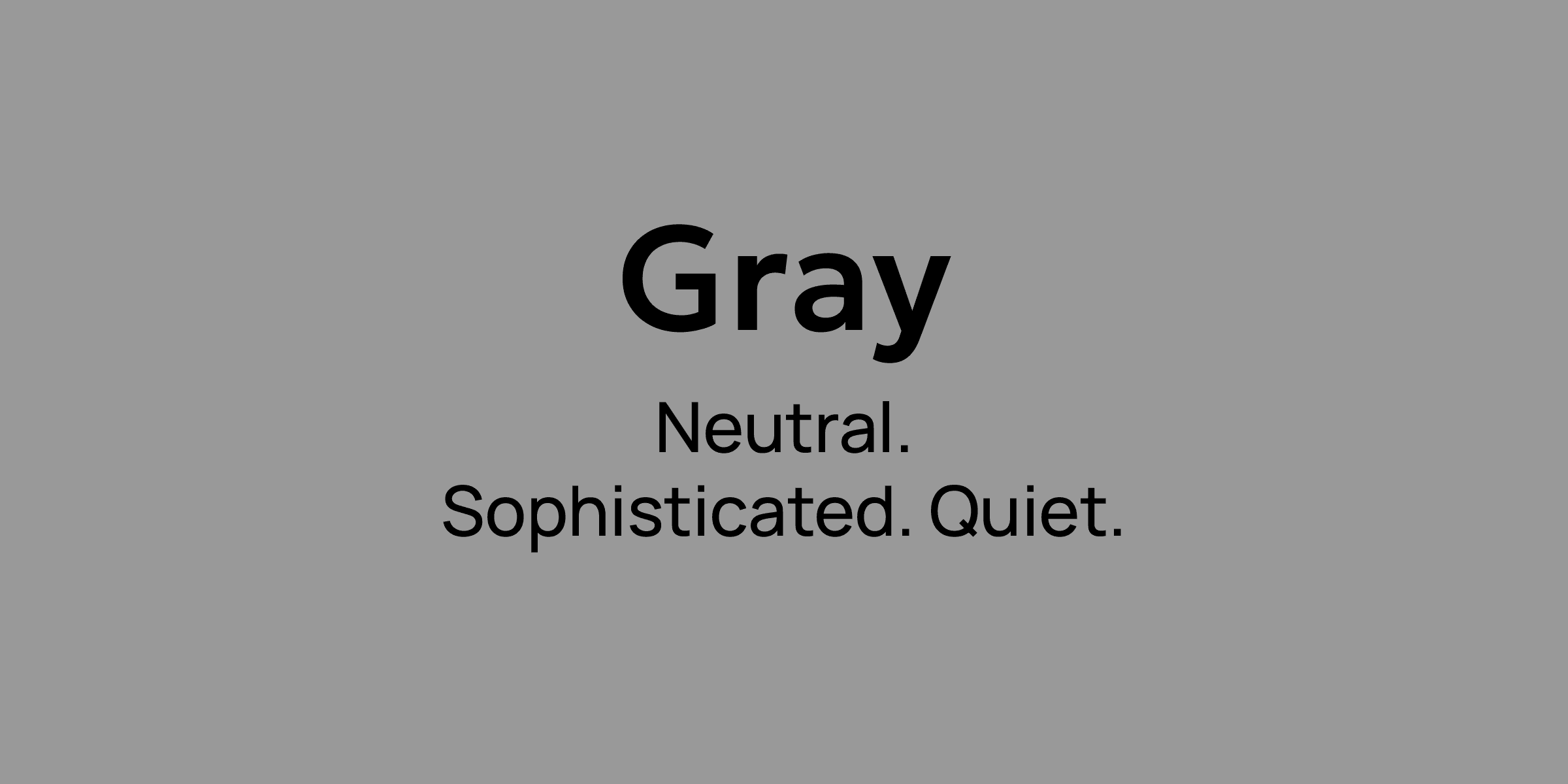
Gray often plays a supporting role rather than a lead. It’s versatile, modern, and rarely overwhelms. Gray is frequently used to balance bolder colors or to signal professionalism in sleek branding.
Used well: Tech, professional services, modern UI design Famous examples: Apple (hardware), Wikipedia, Nissan Avoid for: Youth or lifestyle brands (can come off as dull or overly serious)
Color psychology chart
Here’s a side-by-side overview of the emotional associations, brand traits, and usage considerations for each major color in marketing. This chart is a useful starting point for comparing options when building or refreshing a brand’s color palette.
Color | Emotional Associations | Common Brand Traits | Use With Caution When… |
|---|---|---|---|
Red | Excitement, passion, urgency | Bold, energetic, confident | Used excessively; may trigger anxiety or aggression |
Orange | Creativity, friendliness, enthusiasm | Innovative, youthful, informal | Targeting high-end or luxury markets |
Yellow | Happiness, optimism, youthfulness | Friendly, playful, warm | Used as background or in large blocks |
Green | Growth, nature, balance | Sustainable, calming, fresh | You want to avoid nature-based or health connotations |
Blue | Trust, stability, clarity | Professional, secure, intelligent | You need to feel rebellious, youthful, or edgy |
Purple | Luxury, mystery, creativity | Unique, premium, expressive | Budget-friendly or overly practical brand positioning |
Pink | Playfulness, softness, emotion | Approachable, trendy, emotional | Appealing to corporate or traditionally masculine audiences |
Black | Sophistication, elegance, power | Premium, minimal, serious | Used in wellness or eco-focused contexts |
White | Simplicity, modernity, cleanliness | Honest, fresh, high contrast | Paired with pale colors or used in low-contrast layouts |
Brown | Earthiness, reliability, comfort | Rustic, practical, down-to-earth | Creating a sleek, digital, or futuristic feel |
Gray | Neutrality, balance, sophistication | Professional, modern, calm | The brand needs vibrancy or youthful appeal |
This chart helps highlight that most colors are neither inherently good nor bad—they simply send different signals depending on how they’re used. The right choice depends on the brand's identity, audience, and the specific feelings you want to convey.
Cultural context and color associations
The psychology of color offers a helpful foundation, but context and cultural differences change everything. A color that evokes trust or excitement in one culture may convey a completely different meaning in another. That’s why understanding color associations through a cultural lens is essential for any global marketing and branding strategy.
Take the color red. In Western marketing, it’s often used to grab attention or create a sense of urgency. But in parts of Asia, red is a symbol of prosperity, good fortune, and celebration. Using red in a sale banner vs. a wedding invitation evokes very different meanings—depending entirely on where the viewer is located.
White is another color that flips meaning across the map. In North America and much of Europe, white is often associated with cleanliness, purity, simplicity, and modernity. It’s often associated with white space in design, offering room to breathe and focus. But in countries like China, Korea, and some parts of India, white is traditionally connected to mourning or funerals. Brands that heavily incorporate white into their visual identity may need to reconsider how it is perceived in specific markets or industries.
Even colors like green, orange, and purple aren’t immune to these shifts. For example:
The color green is often perceived as natural and calming, but in certain cultures, it carries political or religious connotations.
The color orange is often associated with playfulness and energy in Western contexts, yet it also holds significant religious symbolism in other cultures.
The color purple, often associated with royalty, is perceived as either sacred or somber, depending on the context.
These associations don’t stop at cultural borders—they also vary by age, gender, and past experiences. While studies suggest blue is a common favorite color across demographics, preferences for certain shades often depend on lifestyle, industry, and context.
For example, B2B tech brands might opt for deeper blues, while lifestyle brands may use softer tones to evoke specific feelings or trends.
This is where color theory and tools like the color wheel become valuable. Understanding primary colors, secondary colors, and how complementary colors work together provides marketers with a strong foundation for creating palettes that balance emotion, legibility, and intent.
The key takeaway? There’s no universal “right color.” Instead, choosing the right palette means considering personal preferences, cultural norms, and the broader message your brand or campaign is trying to send. For global brands—or agencies working across industries—this flexibility can make or break a campaign’s resonance.
How to choose the right colors for a brand
When building or refreshing a brand, choosing the right colors isn’t just about picking favorites or going with what looks good. It’s a process of translation—turning a brand’s positioning, audience, and values into a visual language that works across touchpoints.
Here’s how agencies and marketers can approach that process with more clarity and intention.
1. Start with strategy, not style
Before examining the color wheel, start by defining what the brand represents. What does it want to communicate? Who is it for? What action should people take when they engage with it?
If a brand is rooted in trust, expertise, and long-term relationships, that will lead to different color directions than a brand focused on youth culture, creativity, or disruption. Consider tone and behavior first, then use color theory to bring those traits to life visually.
2. Make the audience feel seen
One of the biggest pitfalls in color selection is defaulting to the founder’s personal preferences or the designer’s favorite palette. However, the most effective brand colors are those that resonate with the audience, not the team behind the brand.
This is where research matters. Competitive analysis, audience personas, and even surveys can help uncover what colors will match surveyed tastes or stand out within a specific category. Sometimes, the right color is the one that competitors aren’t using—especially if it still aligns with the brand’s desired perception.
3. Use contrast with purpose
A sound color palette is about the colors themselves and how they interact. High contrast between elements improves legibility, guides the eye, and supports accessibility. That’s especially important in digital design, where clarity affects performance.
This is where knowing how to pair primary, secondary, and complementary color combinations pays off. A bold brand might lead with high-contrast combinations—like a saturated primary color and a sharp accent—to create urgency and immediacy, especially in CTAs or campaign visuals. A softer brand, on the other hand, might build a palette around muted tones or analogous hues from the same section of the color wheel, using subtle shifts in tone to convey calm, cohesion, or trust.
4. Think across use cases
A color might look great in a logo, but how does it perform in a chart, on packaging, or in a social ad? Strong brand palettes are flexible, not just pretty. They need to work in various applications, accommodate white space, and scale across digital and print formats without losing impact.
For agencies, it’s helpful to pressure-test palettes across multiple marketing materials, including social templates, data visualizations, slide decks, and even ads with limited copy. This ensures that color choices actually support performance, not just aesthetics.
5. Don’t overcommit early
Color selection often happens too early in the branding process—and becomes hard to reverse later. Whenever possible, test ideas in context. Run small campaigns with a limited palette, or A/B test variations of the same landing page with different schemes. Early testing can reveal how color affects engagement and consumer reaction—long before a full brand rollout.
6. Use color to evolve, not just define
Colors don’t have to be static. As a brand grows, its visual identity can evolve to reflect new products, priorities, or audiences. Spotify, for example, transitioned from a neon green and black color scheme to a more nuanced and adaptable system of gradients and tones. This kind of visual maturity signals confidence—and helps keep branding fresh without losing recognition.
Ultimately, choosing a brand’s colors is a creative decision—but it shouldn’t be a guessing game. The most effective palettes are rooted in strategy, designed for flexibility, and tested for impact. In a world flooded with visual content, a clear and intentional use of color helps a brand stand out—quietly and confidently.
Impress clients and save hours with custom, automated reporting.
Join 7,000+ agencies that create reports in under 30 minutes per client using AgencyAnalytics. Get started for free. No credit card required.

Written by
With nearly a decade of experience shaping creative strategy and visual storytelling, Vanessa is a senior designer who merges design sensibility with strategic insight. She has led brand-defining projects across digital and print media, specializing in translating complex ideas into clean, compelling visuals that engage audiences and elevate the brand experience.
Read more posts by Vanessa NevdashenkoSee how 7,000+ marketing agencies help clients win
Free 14-day trial. No credit card required.






